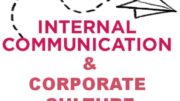In this game of layers, it’s all about navigating through a massive, changing communicationscape. Putting the spotlight on IC & EE, we try to unravel this landscape, and talk to some Internal Communication experts too.
We can better understand the title by dividing it into the following key words – Internal Communications, Communications, Employee and Engagement.
This ever-evolving domain deals with understanding, maneuvering and converting subjectivity into objectivity, continuously, where two situations are never the same.
Subjectivity is integral to human beings – our employees. Anything that affects this human subjectivity is a matter of concern for IC & EE. Communication is the only way this subjectivity manifests. So if this subjectivity is understood well, chances are that communication can be handled well.
What shapes this subjectivity?
Internal factors – Inner voice, emotions and desires
Immediate factors – Family, friends, peers (immediate social circle)
External Factors – Socio-economical and political factors like culture, history, religion, geography, political leadership, resources etc of a region
The deeper an understanding a person has of these words, the better the vision and contribution is in terms of using IC & EE to the advantage of the company.
Scratching the surface
Internal Communication refers to all types of communication that makes work happen in an organisation. That is communication between individuals, between teams, between verticals and departments and how external factors affect all these. A badly-written email circulated to a bigger team could be one of the biggest culprits in bringing down the productivity of a company.
But, who is drafting these emails? Employees!

How difficult is it to align employees with the corporate vision?
Employee support can make or break turning a vision into a reality. Any organisational change starts and ends with employees, observes Meena Vaidyanathan, Founder at Niiti Consulting. No matter how exciting the vision, if there is no buy-in and adoption of the same by employees, the vision can never be translated into actions. Embracing change especially when the change is a significant departure from business-as-usual is always difficult to cascade to employees, but it is necessary.
“The challenge is to keep the vision alive for employees at all times, especially when their daily tasks are mundane and repetitive. Regular engagement and stimuli provided through various communication channels help achieve that,” says Saima Sharif, Co-founder and Director of Crimson Communicare LLP. Organisations who involve employees at the start of any initiative are open and transparent about taking on board the ‘voice’ of employees. “Employees also ‘watch’ their leaders’ actions and only when they see them ‘walk the talk’ is when they believe the vision is credible and there is support to see it through,” points out Aniisu Verghese, Corporate Communications & CSR Lead at Tesco Bengaluru.

Are employees ‘communication ambassadors’?
When they share the value and the vision of an organisation, employees become ambassadors. It’s very important to articulate the corporate values and help employees imbibe them in their everyday work. Values need to be demonstrated in how business is transacted and this needs to be led from the top management. People emulate what they see and no amount of communication can be effective if the values are not translated into action by the management, observes Meena.
Steps are taken to engage people at all levels in meaningful, engaging ways at GE. “We believe it’s critical to build our employees as brand ambassadors. For that we share real time, relevant and meaningful content with our employees for anytime, anywhere consumption,” says Rachana Panda, Chief Communications Officer, GE South Asia. They use mobile communication platforms as well as apps and a vibrant intranet to send a range of engaging content, such as videos, blogs, polls and other compelling content.
Saima points out that it is also critical that the leadership’s actions are in sync with corporate values. “Nothing is more inspiring for employees than a leader who ‘walks the talk’. The key to enroll employees as brand ambassadors is to clearly spell-out the ‘benefit’ i.e. what is in it for them? And the benefit need not be necessarily tangible,” she says.
Every employee is expected to be an ambassador of the brand, asserts Aniisu. Helping employees understand ‘how’ and ‘why’ they need to participate is important in gaining their commitment. By inviting ideas and suggestions, involving them on communication assignments, recognising their contributions, empowering them to learn and teach each other, a company can make every employee a communication ambassador. “At Tesco Bengaluru, our communication philosophy considers these aspects. We run periodic surveys and focus groups on our communication quality and impact, have councils (design, editorial, audio-visual, social media) that involve colleagues to co-create content, run campaigns which put the colleague at the heart of our Communication (Yammer chats, Facebox – Tesco Bengaluru’s anchors, Reflections – our newsletter is colleague-curated, CSR – where colleagues shape the company’s agenda) and Engagement (Talent Showcase – where colleagues entertain each other in an internal platform),” he shares.

Communicating with millennials: ushering in change today
They are a driving force in the workplace. They’ve pushed boundaries in the workplace, including championing for flexible schedules, better benefits, improved parental leaves and fostering the idea that work should feel meaningful. What is the reality in the work environment today?
With millennials, communication is more impactful. Certainly with the technology doubling the pace of change, we need to be agile and match the pulse of the current generation of workforce, outlines Rachana. GE is among few companies globally where leaders are open to feedback; the innovative work culture embraces fresh ideas to communicate better. For example, they realised the need to devise something new to catch the attention of the 5000-plus employees at the India technology centers. “With the help of the HR team we gamified the ‘Beliefs’, thus making it easy for the employees to understand. The objective was not to push down key messages, but to create a pull towards something employees could easily relate to and use the messaging as a way of life. The different levels and ‘Challenge a Colleague’ format enabled a self-propelling mechanism, which saw an exponential growth in usage,” she discloses.
The look and feel of any workplace today is very different from what it was about a decade back. “I am sure millennials are not the only reason for this positive development, but they surely have played an important role. Technology is another factor that has transformed our work culture,” explains Saima. But the most important reason is that organisations have realised the importance of attracting and retaining quality manpower. The work culture and employee policies are being crafted to provide an engaging and motivating work environment. So, she feels it is a win-win situation for all employees, irrespective of the age bracket.
According to Aniisu, their workplace consists of millennials and they actively understand the need to improve engagement and involve them in the company’s priorities. “Engagement is a two-way street and while the organisation can raise awareness about how their work adds value to our goals there is an equal expectation that the millennials will also step up and take ownership for making the organisation successful. We provide numerous opportunities for every colleague to join the conversations, influence how we make an impact internally and externally and we encourage everyone to participate,” he shares.
At Niiti Consulting, they believe in working without boundaries. Meena says, “We, as a team aren’t really the millennial brigade, since most of us have an average work experience of 15 years, but we believe in leveraging technology to maximise our work output and keep the work-life balance as well.”

The multi-generational challenge of India
Knowledge@Wharton has published one such article titled – “India’s New HR Challenge: Managing a Multigenerational Workforce”, which focuses on how events in the last 25 years have led to emergence of a different and probably disconnected generation at the workplace.
In the same report, Amit K Nandkeolyar, Assistant Professor of Organisational Behavior at the Indian School of Business, says, “India has gone through more changes in the past 20 years than most countries witness over a century.”
Unfortunately, we don’t see any analysis of this development/societal change from communication’s perspective.
Indian workforce currently can be easily divided into three – i.e. pre-1991, 1991 – 2000 generation and post 2001. The teens of 2000s were growing up amongst unprecedented exposure and abundance. A closed culture was all of a sudden forced to open up. Families where communication was usually one-way – from the head of the family to the rest of the family was now being challenged. The teens growing in 2000s were growing up in a world that was getting global – more so visually. This led to clash of cultures and questioning of existing practices based on common sense and equality.

How well are we using the above to strengthen the IC & EE?
1991 marked a major shift from manufacturing to machines and machine to human minds. This is where engagement comes into the picture. Liberalisation in 1991 had started showing impact on the economy. Foreign MNCs started setting shops and brought global best practices with themselves. This is where the IC & EE started to gather momentum.
Engagement became a focus, but unfortunately got limited to bonding in the team and enjoyment at work. This started manifesting in the form of parties, functions etc. What it missed is the unit for whom engagement has to be done, i.e. the individual’s mind, whose thoughts are where the engagement starts.
Elaborating on how environment affects Internal Communication strategies, Parminder Panesar, Head of Corporate Communications, Axis Bank, says, “Employees come from diverse cultures and bring with them their uniqueness and interesting viewpoints. For diverse organisations which are present across geographies, this uniqueness and interesting view points aid in crafting interesting communication strategies while also helping create a engaged and well connected workforce”.

The game of layers moves on. Time will tell if the IC & EE practitioners are sourcing their ideas and inspiration in keeping human mind and its vagaries at the centre or, still focusing on tactics as usual.










Be the first to comment on "Internal Communications & Employee Engagement"